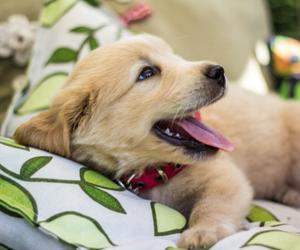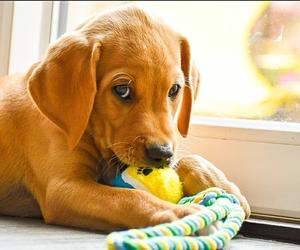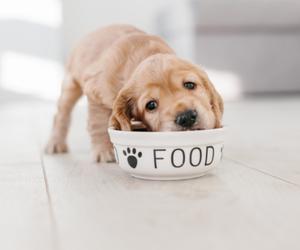Bringing a puppy into your home will drastically alter your life. Puppies are a lot of effort, but they will also bring a lot of happiness into your life. You can very much bet on three things with bringing your new puppy home for the first time: overwhelming excitement, cleaning up your dog’s messes, and a huge lifestyle change.
As you’ll soon discover, a growing puppy requires much more than a feeding dish and a doghouse to thrive. And, while it may seem like a lot of work at first, it’s definitely worth it. Establishing excellent and healthy behaviors during those first few sleep-deprived weeks will lay the groundwork for upcoming years of living with your dog.
Here’s everything you’ll need to know to get your puppy on the correct track to adulthood, whether you’re getting your first dog or just need a refresher course.
Selecting the Best Puppy

If the moment has come for you to get a puppy, you must now select the ideal match. Perhaps you’ll meet your future partner. It’s possible that a puppy will come into your life by coincidence, and you’ll sense an instant connection and know it’s the one, but this isn’t usually the case. It may require you to go out and find a breed and then choose a puppy as per your needs.
First, consider your lifestyle and what you’re looking for in a puppy. Are you looking for a purebred or a mixed-breed dog? Is it preferable to be large or small? Grooming and exercise needs, temperament, and potential health issues are all factors to consider.
The following step is to decide where you will find your new dog. Will you get your new puppy from a shelter? Perhaps you’ll look for a reputable breeder.
Puppy-Proofing Your Home

Before you adopt a puppy, you need to make sure it’s safe.
- Unplug electrical cords to prevent your dog from biting them and getting an electrical shock
- Avoid feeding food from the table. Pups may look adorable as they beg for food, but many human foods are not good for them. Pay special attention to
- Keep your puppy away from human foods like chewing gum, chocolate, raisins, etc, as some of the human foods may be harmful to dogs. Make sure that your medications are out of reach of your pup & the toilet lid is closed to prevent your dog from jumping in it.
- Remove small & sharp objects like coins, pins, knives, etc to keep your puppy safe from choking hazards.
- Find out if your houseplants or plants in the yard are safe for your puppy or not.
- Keep trash cans out of their reach and keep windows closed.
When puppies are small, they are very curious and have lots of energy. So, they try stupid things which could bring them harm. So, try to supervise them while they are playing. Keep an eye on them and train them to understand your commands and not go in a few restricted areas in the home like your kitchen.
Choosing a Puppy Name

Naming your dog something cool and unique is a fun activity. You should name your dog after giving it a lot of thought, as there will be multiple occasions when you will be screaming at the top of your lungs for your dog when it’s time to bathe.
The name should be short and easy to pronounce. Try to choose a name that ends on a vowel and is of two syllables. Try to avoid naming your dog something like “Jay” which may sound like “Stay” to your dog. Or something like “Tum” which sounds like “Come”.
You can find creative ideas for your dog’s name based on his personality and looks. Overall, find something easy that you like and start teaching your puppy his name.
Supplies for Puppies

A new puppy, like a new baby, comes with a shopping list. You’ll need a crate instead of a crib, as well as a dog bed, blanket, bowls for food & water, a nice collar with a name, and a tight leash or harness.
You’ll need the following items for a puppy:
- Bed for your dog: Get two, one to use and one to use as a backup if the first one needs to be washed.
- Food and water bowls made of stainless steel or ceramic
- Toys: Choose something that the puppy cannot swallow.
- Cleaning materials: Disposable paper, disinfectant, and gloves for usage around the house
- To assist with potty training, use a crate.
- Treats are an important element of the training process.
- Puppy food that is healthy and nutritious for your dog as per his breed, size, and age.
- Leash and collar: Get the puppy used to them as soon as possible.
- Brush and comb: Begin grooming the puppy so that he accepts it.
Arrange High-Quality Dog Food

The choice of food for a puppy is a bit different than a grown dog, as a puppy’s body requires more nutrition to grow. When buying puppy food, do proper research and check for the AAFCO label. Also, make sure that your puppy has enough water to drink at all times.
How many times should you feed your puppy?
- Four meals every day from the age of 6 to 12 weeks
- Three meals every day from the age of 3-6 months
- Two meals each day for children aged 6 to 12 months
Maintaining the Health of Your Puppy

Take your puppy to a veterinarian doctor in the initial few days for the general examination. In the initial six months, you will have to meet the vet multiple times for immunizations and later on for neutering. Try to make the experience of visiting the vet a happy one for your pet. A veterinary doctor will clear all your doubts regarding your new pup’s health, diet, and behavior. You can also think about getting pet insurance for medical expenses if you have the budget for it.
Vaccinations for Puppies

Vaccines help your puppy to stay healthy and prevent infections. Regular visits to the vet will allow the doctor to keep track of the growth of your puppy and whether he/she is healthy or not. Consult with the local vet for the exact schedule of vaccinations for your dog.
Create a Hygiene Routine
Training your puppy for peeing and potty outside the house at a designated place can be a very difficult task. But this is necessary to maintain hygiene, keep the puppy clean, and maintain a routine. Designate a secluded place outside for potty training where there is no other waste or pets roaming around. This prevents chances of infection. Also, train your pup to not enter selected areas like the kitchen, not sit on beds and couch, etc.
Here are some ideas of when you should take your puppy out to the potty.
- When you first wake up
- Just before going to bed
- Immediately after your puppy has drunk a lot of water or liquid food
- When your dog wakes from a nap
Your New Puppy’s House-training

House training is one of the first things you’ll teach your new puppy. This process can be challenging, and some puppies learn faster than others. You should start training your puppy as soon as possible as this will be a time-consuming endeavor. Puppies lack bladder and bowel control until they are about 12 weeks old. If your dog is younger, simply be patient.
Puppy Socialization and Basic Puppy Training
Teach your puppy to socialize with other people and dogs calmly. Do some leash training and teach basic commands like sit, stop and come. Puppies love to chew everything as they are teething, so bring them some toys and healthy treats to chew. Spend time with your dog, maintain a routine, take your dog for a walk, and exercise.
Prepare for good behavior by practicing it.

Take care to train your new dog as soon as possible. They must understand the rules at an early age and will grasp them fast if they put out a consistent effort. Allowing your new family member to get away with anything simply because he is a little, cute puppy is not a good idea.
You’ll set your puppy up for a life of healthy social contact if you teach him proper manners.
In addition, obedience training will help you and your puppy form a better bond. Teaching your dog to obey orders like sit, stay, down, and come will help keep him safe and under control in potentially harmful situations.
Commands for Beginners Training Puppies
A puppy must learn basic instructions.
Sit
Use a treat as bait to teach “sit.” Placing the reward in front of your puppy’s nose is a good idea. Raise the reward above the puppy’s head in an arc. Their butt sinks to the floor as they follow the treat. Say “sit” and give the puppy a treat as this occurs.
They should do this frequently. In anticipation of a reward, the puppy will understand what “sit” means and may even perform it on their own.
Stay
When teaching your dog to “remain,” have him sit and then wait a few seconds before rewarding him. Extend the time your puppy has to wait for a treat.
Use the word “remain” as a cue word for this pause. Take one step back and then return to the dog’s side once the puppy has sat still for one minute.
Increase the distance between you and your pet by gently walking further away while your dog remains still.
Come
Runaway from a young puppy to teach it to “come”! This activates their innate desire to remain close to those they love, such as their mother.
Say “come” excitedly as your puppy sprints to catch up. When your puppy comes to you, praise them and give them a treat.
Look
With a reward, you can get your puppy’s attention. From the puppy’s eye-line to the bridge of your nose, move the treat in a straight line. Say “look” as your puppy watches the treat.
Count to ten, then praise and reward your puppy. Extend the time your puppy stares before rewarding them.
Conclusion
When an owner does not follow the training rules regularly, a puppy may become confused. For example, if you decide your puppy is not allowed on the couch, stick to it. It will confuse your dog if they are allowed to come up for cuddling on weekends.
Leaving your puppy unattended outside is a classic potty training blunder. They’re more prone to play rather than focus on the task at hand. Concentrate your puppy’s focus and reward them for peeing in the proper spot to reinforce the training.
Now you know the tips and how to keep up with puppies. Make sure you follow all these points. It will make it easy for you and the dog.
You might also like to read
